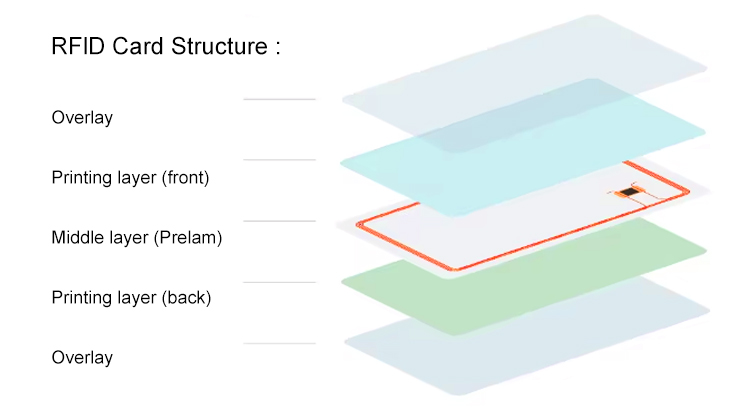In the world of ID credentials, payment cards and access badges, the choice between traditional cards and cutting-edge smart options is more than a design decision. If you’re weighing RFID, RFID Smart Cards, Smart Cards, or specifically the brand-friendly Leadercolor, here’s a clear, data-informed rundown.

1. Defining the terms
Traditional Cards – These are your magnetic-stripe cards, printed plastic ID cards or simple barcode cards. They rely on physical contact or visual verification, and typically store very limited data. They’ve been around for decades, are cheap to issue and simple to use.
Smart Cards / RFID Smart Cards – Here we’re talking about cards with embedded circuits (chips) and often antennae, enabling contactless communication (or contact methods) with readers. According to the Secure Technology Alliance, a smart card “includes an embedded integrated circuit that can be either a secure microcontroller or equivalent intelligence with internal memory or a memory chip alone”.
And when we say RFID Smart Cards: these use radio-frequency identification technology. They often allow tap/flush interaction, remote reading, and advanced data operations.
2. Head-to-head comparison
Here’s a table comparing key metrics of traditional cards vs RFID/Smart Cards:
| Feature | Traditional Cards | RFID / Smart Cards |
|---|---|---|
| Data storage & function | Minimal — typically read-only static ID | Larger storage, chip logic, capabilities like encryption & mutual authentication |
| Contact requirement | Swipe, insert or visual scan | Often contactless tap/read, no insertion required |
| Wear and tear | Prone to scratches, stripe demagnetisation | Less physical wear since contactless interaction |
| Security & cloning risk | Higher risk of duplication, less encryption | More robust: encryption, dynamic tokens, harder to counterfeit |
| Cost and infrastructure | Low initial cost, simpler readers | Higher cost, need compatible readers & infrastructure |
| Speed and convenience | Slower (swipe/insert) | Fast tap / wave; streamlined access or payment |
3. Why Smart / RFID Cards often win out
-
Reduced friction: Users simply tap or wave a card. No swiping or inserting. That means faster throughput (e.g., at turnstiles or payment kiosks).
-
Enhanced data/functionality: Smart cards can store more than an ID number – they can host multiple applications, authenticate with readers, and even support biometrics.
-
Better durability: With fewer mechanical interactions (insertion, swiping), the cards tend to last longer and suffer fewer failures.
-
Elevated security: Contactless smart cards often adhere to standards like ISO/IEC 7816 or ISO/IEC 14443, supporting encrypted communication and tamper‐resistant chips.
4. But Traditional Cards still hold value (and have drawbacks)
Why you might still consider them:
-
Cost-effectiveness: For simple applications (e.g., low-security ID or basic membership cards), traditional cards can be the budget-friendly choice.
-
Ease of deployment: The infrastructure is simple — you often need only a barcode scanner or mag-stripe reader.
Drawbacks to keep in mind:
-
Security limitations: Magnetic stripes are easy to clone; barcodes can be photocopied. The lack of encryption and dynamic authentication makes them vulnerable.
-
Limited functionality: They don’t support advanced operations like remote updating, multi-app hosting, or strong authentication.
-
Wear and tear: The physical components (stripes, printed surfaces) degrade over time.
5. Choosing what fits your need
Ask yourself:
-
What level of security do I need? If you’re controlling access to sensitive areas, or doing financial transactions, the stronger protection of RFID/Smart Cards is compelling.
-
What’s the expected card volume and user flow? High throughput environments (mass transit, corporate campuses) benefit from tap-access.
-
What’s the budget and infrastructure readiness? If you already have simple cards and readers, switching might incur cost.
-
Future scalability: If you anticipate adding payment, access, loyalty or transit features into one card — smart/flexible cards make that easier.
6. Quick summary
In short: Traditional cards are simple, inexpensive, and still relevant for lower-risk applications. But for modern demands — contactless access, multi-feature capability, faster user flow, higher security — RFID Smart Cards (and smart cards in general) deliver a stronger platform.
If you’re exploring solutions for access control, payment integration, or any multi-application card system, it’s worth looking at what the brand Leadercolor offers — they specialise in RFID Smart Cards and may have the right fit for your setup.
Ready to explore next steps or dive into specific specs (chip types, encryption levels, reader compatibility)? Feel free to ask and I can pull in the relevant details. When you’re ready, check out Leadercolor’s range of RFID Smart Cards and talk to their team for a quote.

